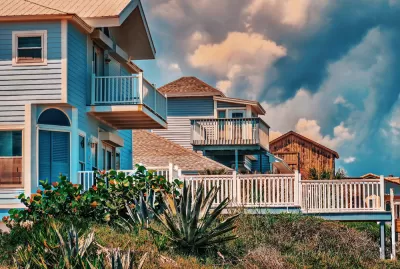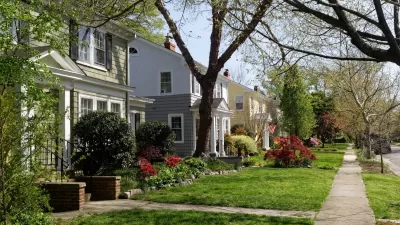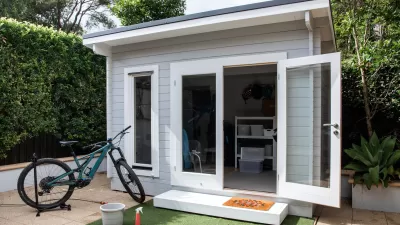The city expanded the areas where homeowners can build ADUs in an effort to boost housing supply and affordable rental units.

Two bills passed by the Jacksonville City Council will legalize accessory dwelling units (ADUs) in most Jacksonville neighborhoods, except where prohibited by homeowners associations. As Mike Mendenhall reports in the Jacksonville Daily Record, council member Rory Diamond, who sponsored the bills, says “the new structures would increase property values where they’re built, particularly in Jacksonville’s urban neighborhoods where advocates say the need is greatest.”
Restrictions in the bills include an owner-occupancy requirement and a rule stating that the ADU must adhere to a similar aesthetic style as the main home. The addition’s footprint must be limited to 25 percent of the house or 750 square feet, and the structure cannot be taller than the house.
Opponents say the proliferation of ADUs could “ruin the ‘ambiance’” of the city’s traditional single-family neighborhoods, a common concern among ADU detractors. Yet ADUs, once known as carriage houses, are common in some of Jacksonville’s most historic neighborhoods. Accessory units only fell out of favor more recently, when single-family zoning began to dominate America’s residential neighborhoods.
Other supporters of the bills say many Jacksonville residents were already building ADUs, and that legalizing the process would make their construction safer while adding sorely needed housing stock.
FULL STORY: Council approves plan to expand accessory dwelling units in Jacksonville

Planetizen Federal Action Tracker
A weekly monitor of how Trump’s orders and actions are impacting planners and planning in America.

Maui's Vacation Rental Debate Turns Ugly
Verbal attacks, misinformation campaigns and fistfights plague a high-stakes debate to convert thousands of vacation rentals into long-term housing.

Restaurant Patios Were a Pandemic Win — Why Were They so Hard to Keep?
Social distancing requirements and changes in travel patterns prompted cities to pilot new uses for street and sidewalk space. Then it got complicated.

In California Battle of Housing vs. Environment, Housing Just Won
A new state law significantly limits the power of CEQA, an environmental review law that served as a powerful tool for blocking new development.

Boulder Eliminates Parking Minimums Citywide
Officials estimate the cost of building a single underground parking space at up to $100,000.

Orange County, Florida Adopts Largest US “Sprawl Repair” Code
The ‘Orange Code’ seeks to rectify decades of sprawl-inducing, car-oriented development.
Urban Design for Planners 1: Software Tools
This six-course series explores essential urban design concepts using open source software and equips planners with the tools they need to participate fully in the urban design process.
Planning for Universal Design
Learn the tools for implementing Universal Design in planning regulations.
Heyer Gruel & Associates PA
JM Goldson LLC
Custer County Colorado
City of Camden Redevelopment Agency
City of Astoria
Transportation Research & Education Center (TREC) at Portland State University
Jefferson Parish Government
Camden Redevelopment Agency
City of Claremont





























